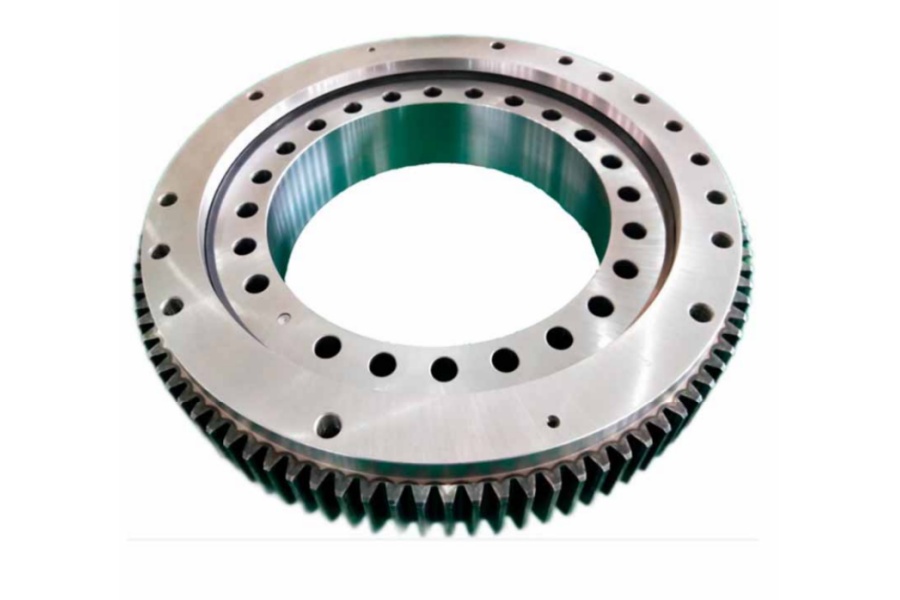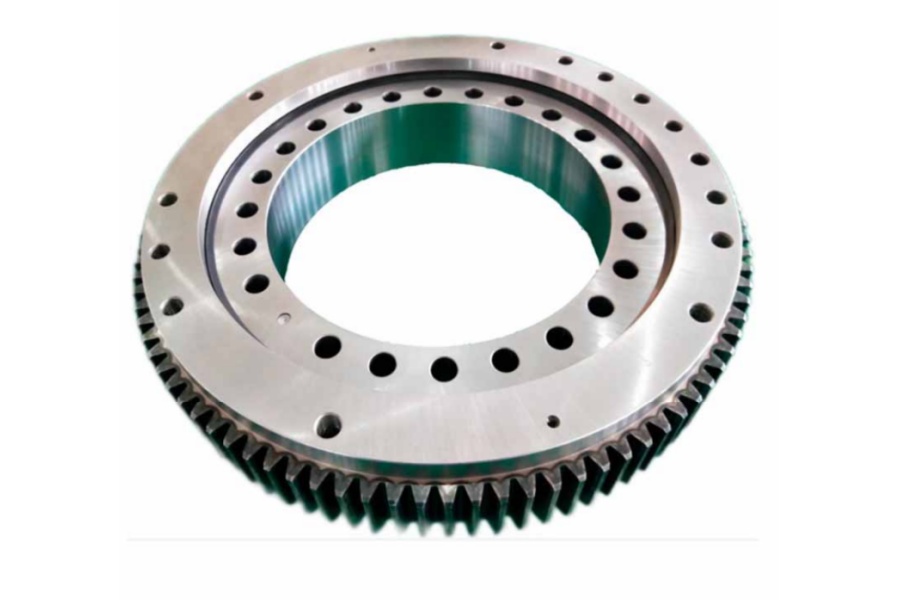
Key Factors For Selecting The Right Slewing Bearing
What Is A Slewing Bearing?
Slewing Bearing is a precision-engineered rotational component designed to simultaneously handle complex combinations of axial loads (parallel to rotation axis), radial loads (perpendicular to axis), and tilting moments (tipping forces) while enabling controlled rotation between structural elements. Featuring hardened gear teeth and robust alloy steel construction, these large-diameter bearings serve as foundational load-transfer points in heavy machinery, performing essential functions including structural support, torque transmission, and rotational guidance. Proper selection directly impacts equipment safety, operational reliability, and service life.

Critical Selection Factors For Slewing Bearings
Selecting the optimal slewing bearing requires rigorous analysis across four interdependent domains:
Load Capacity Analysis & Safety Engineering
Load Quantification: Precisely calculate operational axial loads (Fₐ), radial loads (Fᵣ), and tilting moments (M) through finite element analysis or ISO 281 dynamic models
Dynamic Load Considerations: Account for impact forces (e.g., crane hoisting), vibration harmonics (wind turbine yaw), and asymmetric loading (excavator digging)
Safety Factor Protocol: Apply industry-standard multipliers (typically 1.5-3.0) based on application criticality:
Required Rating = Maximum Operational Load × Safety Factor
Example: 50kN axial load with safety factor 3 → Select bearing with ≥150kN axial rating
Fatigue Life Verification: Calculate L₁₀ life expectancy considering load spectra and operation cycles
Motion Profile & Drive Integration
Kinematic Requirements: Determine operational speed (0.1-10 RPM typical), acceleration/deceleration profiles, and positioning accuracy (±0.1° common)
Gear Interface Specification: Define module (8-40mm), pressure angle (20°/25°), and accuracy class (DIN 3962 Class 7-10) matching drive pinion
Inertia Matching: Calculate reflected inertia at bearing interface for proper motor sizing
Thermal Management & Material Compatibility
Temperature Ranges: Define operational extremes:
Standard Range: -30°C to +80°C (NBR seals + mineral grease)
High-Temperature: -15°C to +280°C (FKM seals + PFPE grease like Mobil SHC 460)
Cryogenic: -60°C to +120°C (HNBR seals + synthetic grease)
Retainer Selection: Metal cages for >120°C environments; polymer retainers below 100°C
Thermal Distortion Mitigation: Allow for clearance adjustments in high ΔT applications
Environmental Protection Strategy
Corrosion Protection: Specify coating systems based on ISO 12944 categories:
C2 (Indoor): Zinc phosphate + epoxy paint
C4 (Coastal): Thermal-sprayed zinc + epoxy sealant
C5-M (Offshore): Duplex stainless steel plating
Sealing Hierarchy:
Single lip seal: Clean indoor environments
Triple labyrinth + V-ring: Mining/construction dust
Pressurized lip seals: Submersion risk applications
Contamination Defense: Integrate scraper rings for slurry environments (tunnel boring)
Essential Slewing Bearing Characteristics
Triaxial Load Capacity: Engineered for combined axial/radial/moment loading
Integrated Power Transmission: Hardened gear teeth (AGMA 10+ hardness) on raceways
Macro-Scale Dimensions: 500mm to 10m+ diameters with 50:1 diameter-to-height ratios
Precision-Grade Rotation: DIN 620 raceway tolerances and DIN 3962 gear standards
Modular Configuration: Customizable mounting flanges, lubrication ports, and sensor integration
Critical Industrial Applications
Wind Energy: Yaw bearings (3-8MW turbines requiring >175,000 cycles)
Mobile Cranes: Swing rings for 1,200+ ton lift capacity
Port Equipment: Container crane slew bearings with <0.05° backlash
Mining Systems: Excavator rings handling 35,000 kN·m moments
Defense Platforms: Radar bases needing EMI-compliant rotation
Solar Tracking: Polar-aligned arrays requiring 0.1° positioning accuracy
Slewing Bearing Cost Drivers
Material Volume: Forged steel weight scaling with diameter³ (Ø4m = 8x Ø2m mass)
Heat Treatment Complexity: Induction hardening costs increase 40% for >100mm tooth depth
Precision Premium: DIN Class 7 gears add 25-35% machining time vs. Class 9
Protection Systems: C5-M corrosion protection doubles base coating cost
Gear Configuration: Internal gears require 20% higher machining investment
Certification Requirements: DNV-GL/CE documentation adds 8-12% administrative overhead
Logistics: Special transport needed for bearings exceeding 4m diameter
Supplier of Slewing Bearing
LYRADRIVE delivers precision-engineered slewing bearings through integrated technical partnership. Our selection methodology combines ISO 281 load analysis with application-specific FEA modeling to optimize safety factors. Production facilities feature climate-controlled gear grinding for DIN Class 6 accuracy and automated coating lines providing certified C5-M corrosion resistance. Engineers collaborate on thermal management strategies – specifying FKM seals and PFPE greases for 280°C environments. With full in-house manufacturing from forging to final inspection, we guarantee 30% shorter lead times while maintaining JIS B 1501 quality standards. Contact LYRADRIVE for lifecycle-optimized bearing solutions.



